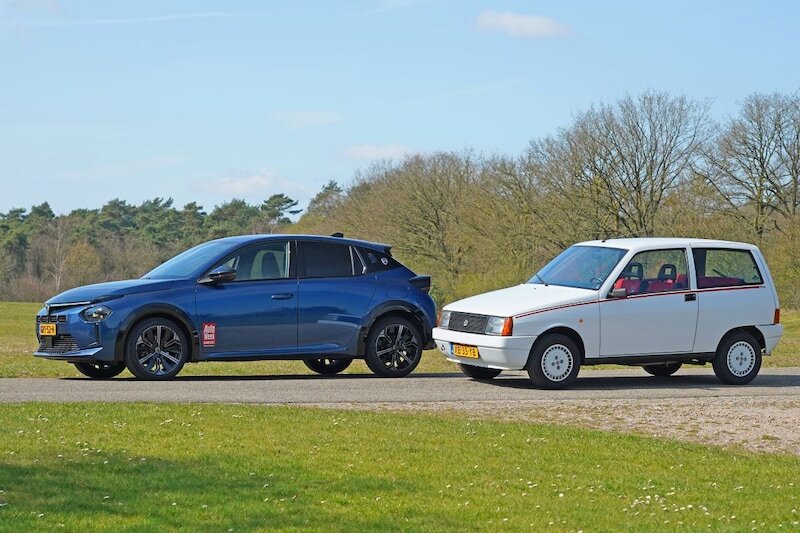
With the Ypsilon, Lancia returns to the European stage. Its distant ancestor, the Y10, was the expensive, luxurious sibling of the Fiat Panda in its time. Outside Italy, the model led a slumbering existence. Whether the latest creation – which marks the return of the brand – will break that remains to be seen.
Lancia has led a slumbering existence outside Italy for years. The time of the Y10, Delta, Prisma, Thema, Dedra, Kappa, Lybra, Musa, and Thesis is long behind us. The only model, the Ypsilon, last received a new skin in 2011. In the Netherlands, the importer carried the model until 2017. After that, things went quiet around the once technically innovative niche brand, until 2023. Within Stellantis, to which the brand now belongs, there is renewed faith in Lancia. With the Pu+RA HPE concept car, which serves as a harbinger of the Ypsilon, Lancia surprises friend and foe. By using standard technology on the ECMP platform, a successor to the Ypsilon can be created with relatively little cost. It also rides along with electrification by sharing technology with the Opel Corsa and the Peugeot 208. Compared to its two fellow group members, the Ypsilon fulfills the role of a niche product with a corresponding price tag, starting at over €30,000. You can order it as a hybrid or as a fully electric car. Just like in previous years, it is available in a basic trim and as an ultra-luxuriously appointed LX. The AutoWeek endurance test car is the Edizione Cassina Limitata, which is only available this year.
Y10 is a three-door
Perhaps you have forgotten the Y10. Yet, for years, it has been the pillar on which the Lancia brand rests. The Y10 – initially the project code – is the successor to the now classic A112 in 1985. With its quirky design and styling, it is the perfect niche car for those who find a Panda or Polo too ordinary. The latest creation follows exactly the same course. It is a direct Stellantis clone, because the Ypsilon is fundamentally identical to an Opel Corsa or a Peugeot 208. Of course, the latest version is a five-door hatchback. Its ancestor from 1985 is a three-door. Nowadays, a three-door has no chance, unless it is a Mini. In its time, the Y10 is a special duck in the pond, because its tailgate is vertical and painted silk-matte black to emphasize the aerodynamic shape.
Y10 is very noticeable
That does not apply to the Y10 in the photos. That is the so-called Fila version, named after the Italian sportswear and shoe brand. Hence the logos that you encounter in a few places, the blue-red striping, the white bumpers, and even white hubcaps. The Y10 is quite noticeable when it appears in showrooms with its pronounced wedge shape, which yields a drag coefficient of only 0.31. The steeply sloping hood and the flat-lying glued windshield contribute to this. The Y10 was designed in Fiat’s Centro Stile – partly by the Dutchman Tom Tjaarda – but we also see the hand of Giugiaro, who was allowed to participate in the competition. In some countries, the chic B-segment car goes through life as Autobianchi, with us as Lancia. However, the grille bears the Autobianchi logo until the major facelift. On the tailgate, the brand name is even written out in full. Downright confusing, right?
Y10 is called Ypsilon from 1995
After 1,134,248 units, the Y10 continues as Ypsilon from 1995, and the fourth version appears in 2024. Compared to the Y10, it lives on a much larger scale. Or is it the other way around? Does the Y10 live on a small scale? It measures only 2.16 meters between its 13-inch front and rear wheels, the latest 2.56 meters. The growth is also in length and width: 2.39 versus 4.08 respectively 1.51 versus 1.76 meters. And the weight? From 780 to 1,182 kilos. From 13-inch to 17-inch wheels, from tire size 135/70 to 205/45. Talk about car obesity!
Current Ypsilon a design statement
The Ypsilon anno 2025 has become a true design statement, even though it has to fit into the straitjacket of mother Stellantis. Nevertheless, Lancia designer Emanuele Torrassorri has done his utmost to make something special out of it. He has reinterpreted countless details from various models from the past. For example, we see the shield-shaped Lancia grille back in an illuminated cross and the taillights, in which the turn signals have the shape of a quarter-turned Y, a nod to the Stratos. For the C-pillar, which bears the logo, the Beta HPE is the source of inspiration. Yet you cannot possibly describe the Ypsilon as a retro car. It is too original as a whole for that.
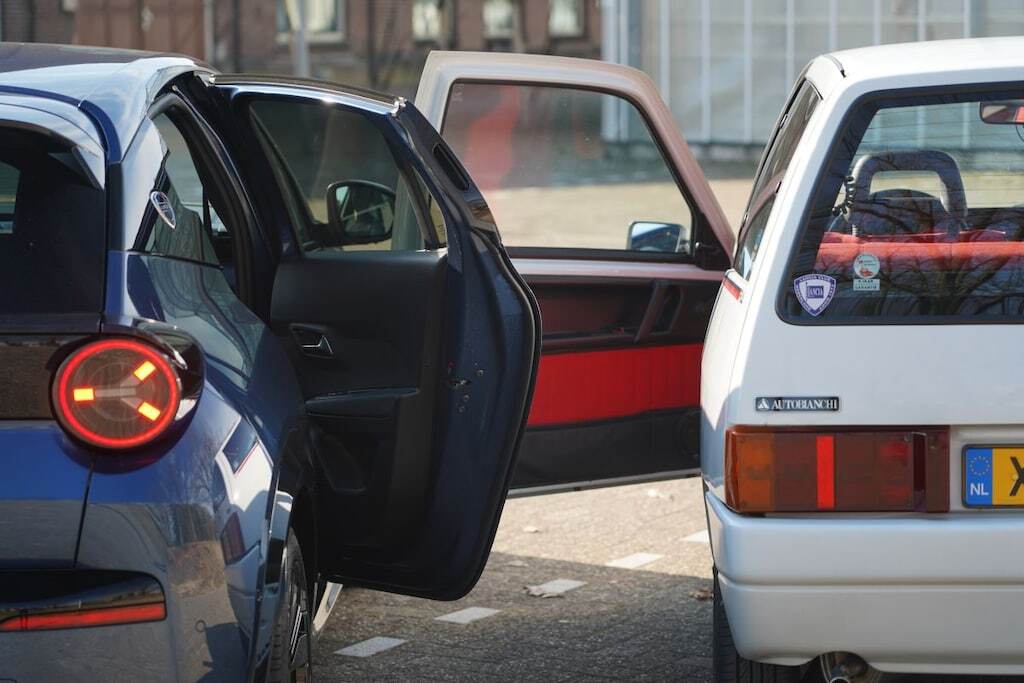
Wonderful to get in through those huge doors
What a pleasure to get in. Two doors instead of four provide a spacious entry, if you get the space to fully open the doors. In a tight parking space, you have to turn your backside on the seat to get out. Going backwards takes a little more effort, but thanks to the clever double seat hinges, there is enough room to maneuver. You demand some accommodation from the front passengers, because there is hardly any legroom if the seats are in a normal position. What do you want on a wheelbase of 2.16 meters. Inside that ancient Y10, we miss the look of the LX version. It spoils the eye with beautiful alcantara on the dashboard, seats, and rear seat.
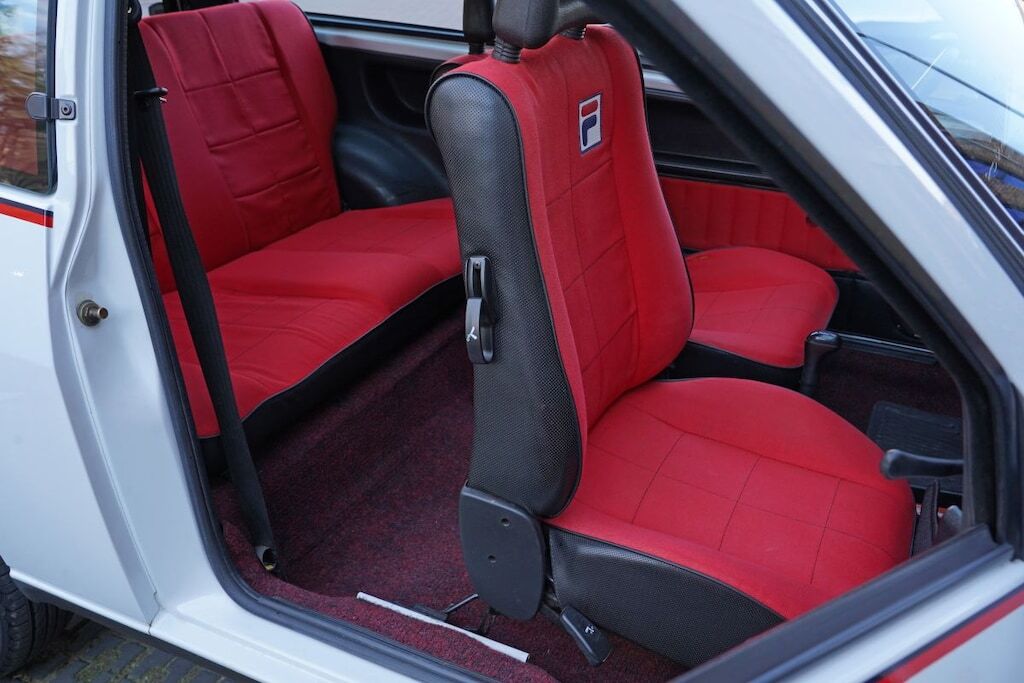
The Fila offers frivolity. The mad red upholstery – including the Fila logo – is dazzling, but oh so cheerful. There is nothing too much or too little on the Y10. The long stick of the five-speed proudly protrudes from the almost flat floor. Around it something you could call a center console. The dashboard houses the basic necessities, such as sliders for ventilation and heating, and a handful of push buttons for rear window heating, rear fog light and rear window wiper plus an idle switch. A tachometer is missing for understandable reasons: you might be shocked by the revs that the machine makes on the highway. Lancia uses that space for a series of diodes that may or may not warn of disaster or remind you of the choke that you have forgotten to push back after the engine has warmed up. Within the mini-size, the interior feels particularly airy and even spacious, at least in the front. You sit a little high on the buck, which guarantees a perfect view around, helped by the fairly thin A-pillars, hardly a C-pillar and long side windows. A reversing camera and sensors that detect ‘blind’ spots are superfluous. The dashboard hardly protrudes into the interior, which also contributes to the airiness.
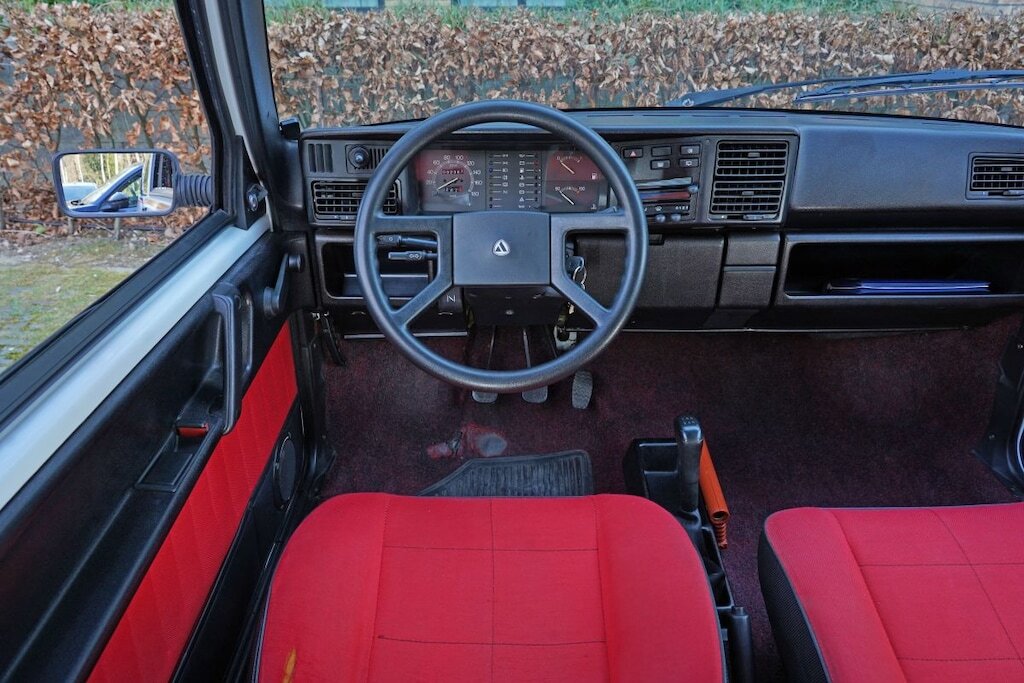
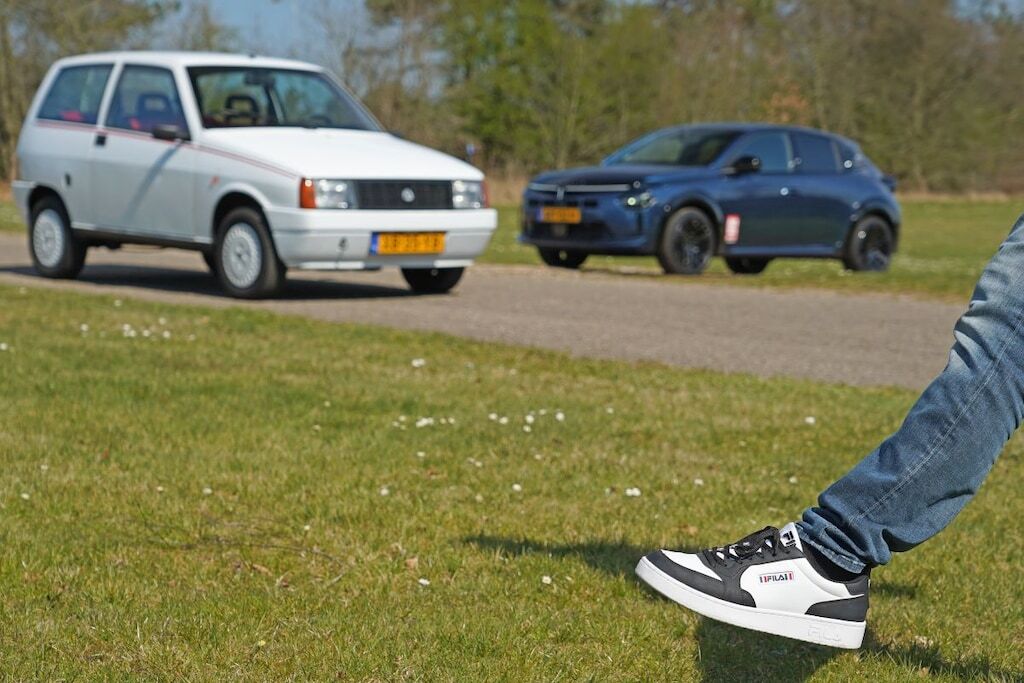
New Ypsilon still creative inside
How different is that in the youngest Y. The driver’s seat in this Edizione Cassina can even be electrically raised or lowered. In the lowest position, you look out on a rather busy dashboard, partly made of hard plastic, but original in design. Of course, there are screens, the right of which is a touch screen. Fortunately, you can operate the volume with a rotary knob and the ventilation with push buttons. In addition, you have the SALA interface (which stands for Sound, Air, Light, Augmentation), a somewhat slow and viscous system with which you can adjust the interior lighting, audio, and climate to your liking. Original is the semi-circular table on which you can charge your smartphone. In the center console you will find the toggle switch that puts the eight-speed automatic transmission into operation, flanked by the push button to switch on the engine. Moreover, you can choose from the drive modes there. Small window surfaces and thick A, B, and C-pillars obstruct the view, so that you have to fall back and rely on supportive vision from sensors. You can trust the Lancia interior designers for creativity. You sit on perhaps the most beautiful seats and bench of the last ten years, made of velor and stitched in a beautiful design. Depending on your chosen body color, it is also available in subdued blue or orange-red. All this is combined with black carpet and headlining.
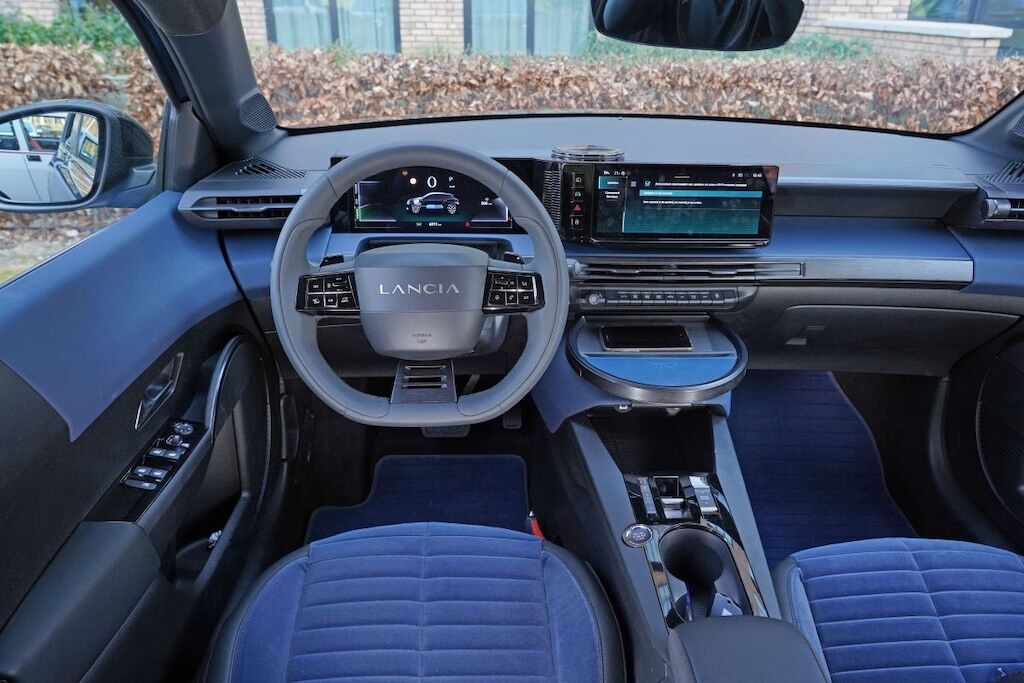
Wheelbase differs by almost forty centimeters!
Apart from the almost identical name, there is a world of difference between the original and its forty-year-younger descendant. Look at the wheelbase: that differs by almost forty centimeters. Yet you do not have to expect a space wonder from the Ypsilon. Modern thick door panels and styles do violence to the interior space. The streamline makes the A-pillar lie flatter, whereby safety requires that it is executed thicker. There is ample legroom, also for the rear passengers. There is even plenty of luggage space left. You do lift the luggage over a comparatively high threshold. That will undoubtedly also have to do with safety and the Stellantis corset.
FIRE engine has nothing to do with fire
The Y10 is in 1985 the first car within the Fiat concern – to which Lancia since 1969 and Autobianchi since 1957 belong – that uses the new FIRE engine, even earlier than the facelifted sister model, the Fiat Panda. FIRE means Fully Integrated Robotised Engine. So it has nothing to do with fire. The engine measures 999 cc and offers 45 hp in the basic version, good for a theoretical consumption of 4.8 liters per 100 kilometers. The FIRE engine is regarded as one of the best Fiat engines. It sounds and runs pleasantly and performs very decently, also in the higher rev ranges, in which it must necessarily be on the highway. However, the city is its domain and its maneuverability comes in handy there.
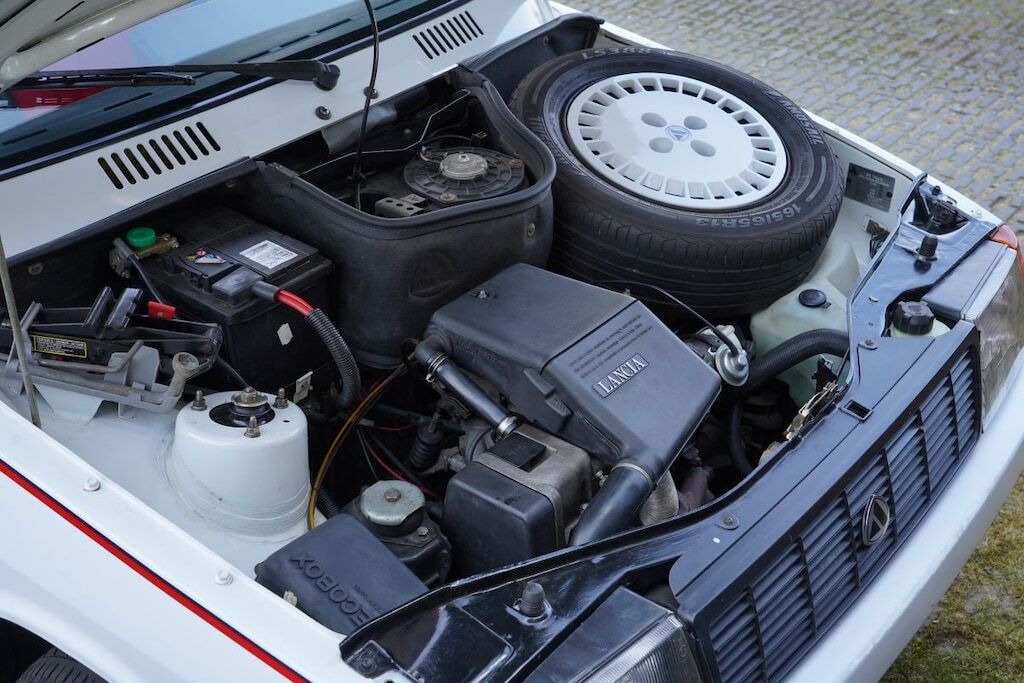
Y10 is based on Panda
Underneath, the Y10 is a facelifted Fiat Panda, so equipped with the new Omega rear axle, which gives it a more comfortable and safer road holding, even if that axle is still rigid. However, the big difference lies in the application of coil springs instead of the leaf springs with which the Panda is equipped from before the facelift. The Y10 springs nicely smoothly, although it has trouble with thresholds because of its ultra-short wheelbase. In gentle bends, it leans over considerably, to indicate that the physical limits are imminent. It also wants to dive nicely if you brake hard, making it a child of its time. The Ypsilon must not know anything about diving and leaning. It is tightly sprung, reacts with clear bumps on ridges, and wants to attack thresholds at low speed. Lancia says that it has paid extra attention to sound insulation, steering, and suspension/damping for its premium hatchback. Yet coarse asphalt penetrates acoustically into the cabin. The FIRE engine, which has served for years in small Fiats and derivatives, has long been relegated to the museum.

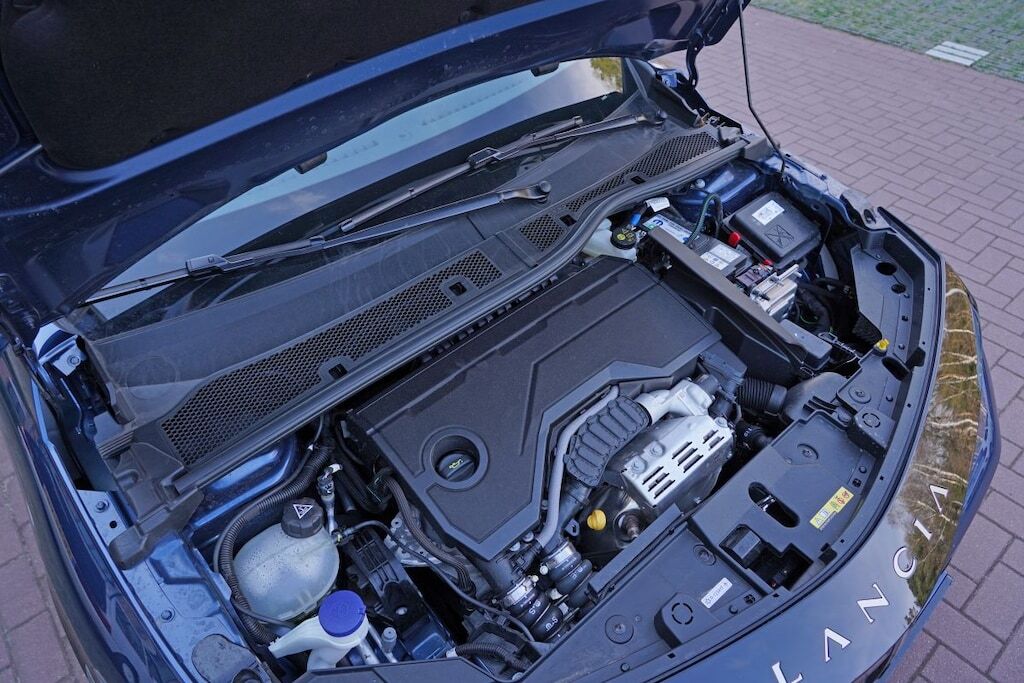
21 kW electric motor
The youngest Ypsilon uses the Stellantis three-cylinder turbo engine, which initially had 100 hp in the books, but now suddenly delivers 110 hp due to a different way of adding up the electrical support of the mild hybrid drive. It is namely linked to a 21 kW electric motor, with which you theoretically get tens of kilometers. However, Lancia is silent about that range, because a mild hybrid! The three-cylinder is barely audible and is kept in check in revs by the effective eight-speed automatic transmission with double clutch. So expect some hesitant starting and doubt if you want to continue after braking hard. Also, the interaction between fossil and electric sometimes goes a bit restless. Although you control the regeneration with the paddles behind the wheel, the technique still regenerates quite strongly even in the mildest position.

Then also 1 in 20
Forty years lie between these two Y’s. Four decades in which much progress has been made, especially in the field of safety and comfort. Consumption is an exception to this: the Y10 ran almost 1 in 20 with a bit of velvet gas foot, the endurance tester of the youngest edition kicks it to about the same figures, due to the much higher weight and the larger tire size. Will the latest Ypsilon make it? For the time being, the jubilation around its arrival has not translated into resounding sales figures. To date, it sells four times less than the last Ypsilon. After the arrival of the electric version, a push has failed to materialize. It is to be hoped that the new Ypsilon will create its own niche. Y’s and otherwise serving.